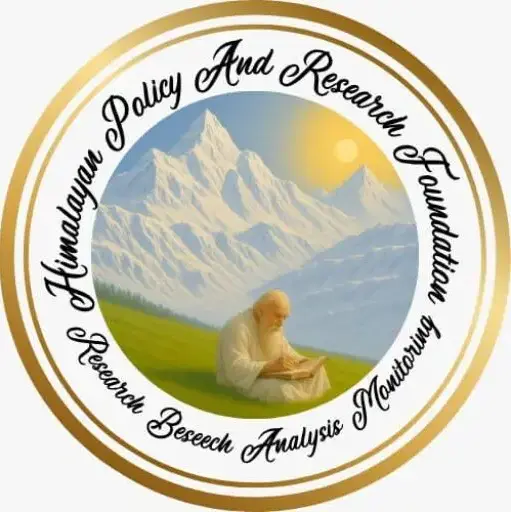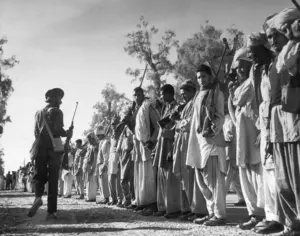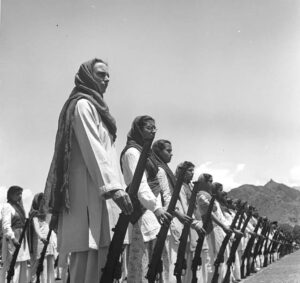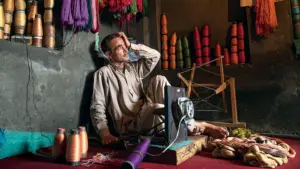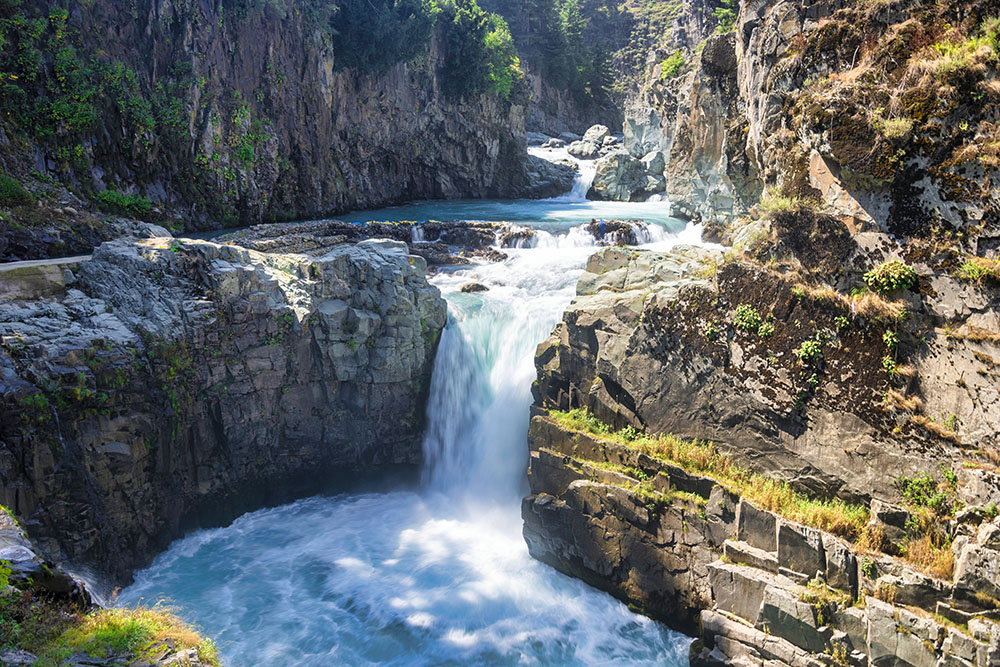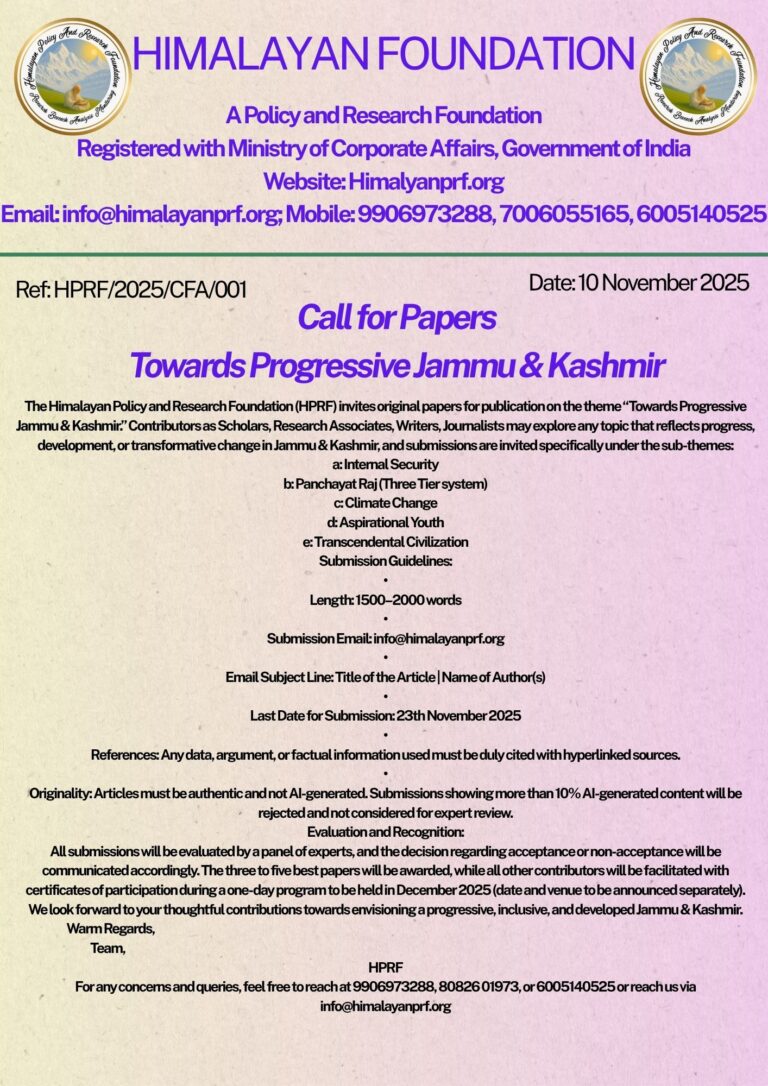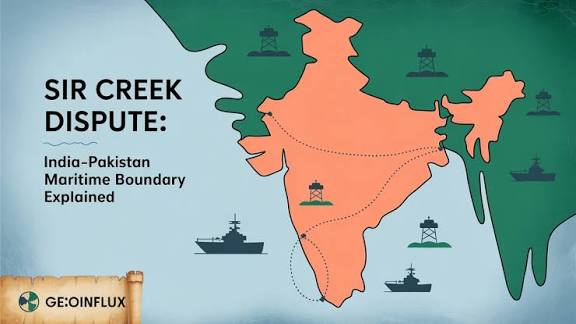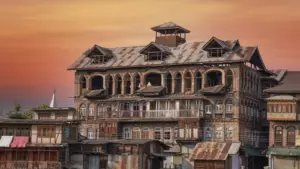Written By: Sheeraz Zaman Lone
( Social Activist from Jammu and Kashmir India )
There are rivers that flow through land, and there are rivers that flow through memory. The Veshaw River, born in the Pir Panjal folds of Kulgam, once belonged to both. A tributary of the Jhelum, it is modest in scale, but in Kashmir’s cultural geography, it held the dignity of a moral compass—a river that did not roar but murmured its way into the consciousness of a people who treated water not as a commodity but as continuity.
To speak of the Veshaw today is to speak not of water, but of loss. Not only the loss of an ecosystem, but of an ethical compact—between people and place, nature and norm. The river that once carried folklore now carries sediment. The banks that once hosted village fairs are now carved up by excavators. The water that once cooled the feet of saints and peasants alike has been reduced to a sludge of extraction and neglect. What is being destroyed is not merely a body of water, but a way of being in the world.
There was a time when the Veshaw marked more than topography. It was a site of seasonal rhythm, a repository of oral histories, a corridor between myth and subsistence. Farmers looked at its flow as a calendar. Children were introduced to the river not as danger, but as delight. In Kulgam and its peripheries—Devsar, Qaimoh, and Frisal—the river was neither feared nor worshipped. It was understood.
This understanding was not intellectual but cultural. Songs were composed on its seasonal swell. A child’s first dip in the river was a community event. The Veshaw was not fenced off from daily life; it was woven into it. Its waters irrigated not just orchards but the imagination of a place that has always lived in the shadow of beauty and violence. The relationship with the river was not one of conquest but of conversation. It demanded no dominion, only recognition.
The desecration of the Veshaw has not happened overnight. Like most ecological losses, it is the result of cumulative silences. The rot began not only with administrative indifference but with the slow collapse of cultural responsibility. What used to be reverence has been replaced with indifference. The old ethic of restraint—where people knew what not to take from the river—has given way to an ethic of entitlement.
In recent years, rampant mechanized sand mining—often carried out by powerful contractors with invisible patronage—has turned the riverbed into a quarry. The balance that once governed the Veshaw’s flow is now under assault. Sand, gravel, and boulders are lifted indiscriminately, destabilizing banks, destroying aquatic life, and permanently altering the river’s ecological metabolism. Even during lean-flow seasons, the river is subject to merciless dredging.
When people speak today of ‘development’, it is this logic that dominates—one that sees the river not as a living organism but as a resource to be exhausted. Machines now do what only hands once dared to do, and in doing so, they erase not just the river’s form but its meaning.
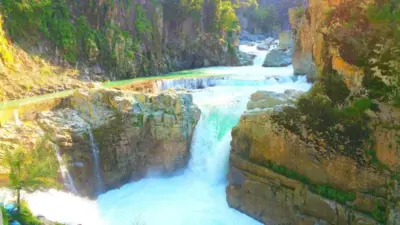
The crisis of the Veshaw is not merely environmental. It is civilizational. A society that severs its relationship with its rivers is one that is in quiet decay. And in Kashmir, where alienation has many registers—political, economic, existential—this ecological alienation is perhaps the most ignored. We speak of dignity in constitutional terms, but ignore the environmental conditions in which dignity is supposed to flourish.
The erosion of the Veshaw speaks to a broader malaise. The institutions meant to safeguard its integrity are either absent, co-opted, or hollowed out. Local Panchayats lack teeth; district administrations often look the other way; environmental clearances are easily obtained—or bypassed. There is no independent monitoring mechanism to ensure ecological accountability. The river is being looted in daylight, and the silence is not accidental. It is structural.
Moreover, water bodies in Kashmir have been reduced to a calculus of engineering. There is little effort to rebuild the moral vocabulary through which communities once related to water. Schools don’t teach about the Veshaw. There is no cultural programming that reanimates its story. Civil society remains preoccupied with issues deemed more urgent. In the name of normalcy, the ecological emergency of rivers like the Veshaw has been rendered invisible.
What makes this crisis particularly tragic is that it was avoidable. The degradation of the Veshaw is not due to natural disasters or demographic explosion. It is the outcome of policy failure and cultural dereliction. It is not just the state that failed the river; it is all of us. The elderly, who once scolded youngsters for washing clothes upstream, now shrug. The youth have grown up seeing the river as little more than a channel to be crossed, not engaged with. The decay is not just physical—it is moral.
But all is not yet lost. The Veshaw still flows, however choked. It still cuts across villages that remember what it meant to live beside water that nourished, not vanished. A revival is possible—but it requires a new kind of politics. One that places ecological justice at the center of development. One that gives rivers a voice in the moral economy of a people. One that recognizes that no society can call itself civilized if it cannot even keep its rivers alive.
Realistically a river is not just a source; it is a sign. The health of the Veshaw is a measure of our collective health—cultural, institutional, spiritual. To recover the river is to recover a part of ourselves that we have allowed to be disfigured in the name of progress.
There are few better places to begin Kashmir’s long process of healing than its rivers. They are not monuments of the past, but promises to the future. If we cannot even defend the Veshaw—a river of such gentle scale—how do we pretend to defend anything else?
In memory of all that flowed, and what must yet.
